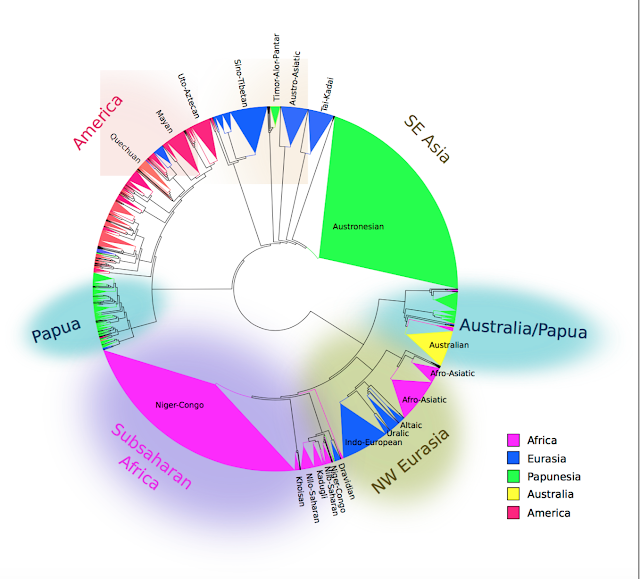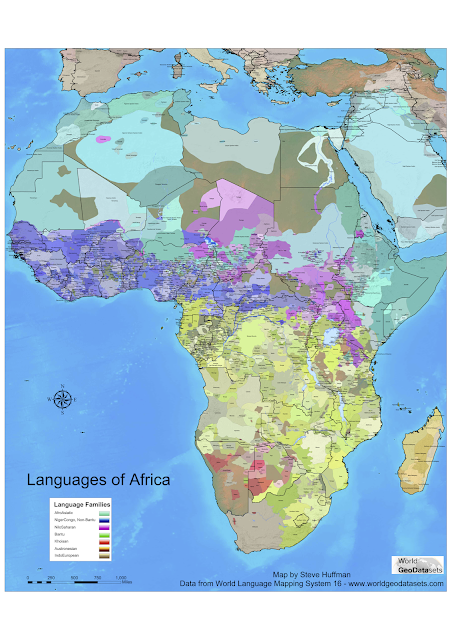Can language be effected by non-linguistic factors such as economics and gender equality?
More interesting new things a-coming! Ladd, Roberts and Dediu have just published a review article on potential spurious correlations between features of language and non-linguistic features of where and by whom the language is spoken. These are, among others: climate, gender equality, economics and sexuality. It's a review article so they summarize a lot of previous research which gives you a good overview. They also point out some very important issues when controlling for language relatedness and contact. I really recommend it.
There's been to say the least a lot of studies like this recently, and a lot of debate too. I can really recommend reading the posts on spurious correlations on the blog Replicated Typo . It's a great blog that deals cultural evolution and related topics. One of the authors of the article, Seán Roberts, is also an author there.
Full reference
Ladd, D. R., Roberts, S. G., & Dediu, D. (2014). Correlational studies in typological and historical linguistics. Annual Review of Linguistics, 1. doi:10.1146/annurev-linguist-
Abstract
We review a number of recent studies that have
identified either correlations between different linguistic features
(e.g., implicational universals) or correlations between linguistic
features and nonlinguistic properties of speakers or their environment
(e.g., effects of geography on vocabulary). We compare large-scale
quantitative studies with more traditional theoretical and historical
linguistic research and identify divergent assumptions and methods that
have led linguists to be skeptical of correlational work. We also
attempt to demystify statistical techniques and point out the importance
of informed critiques of the validity of statistical approaches.
Finally, we describe various methods used in recent correlational
studies to deal with the fact that, because of contact and historical
relatedness, individual languages in a sample rarely represent
independent data points, and we show how these methods may allow us to
explore linguistic prehistory to a greater time depth than is possible
with orthodox comparative reconstruction.



Comments
Post a Comment